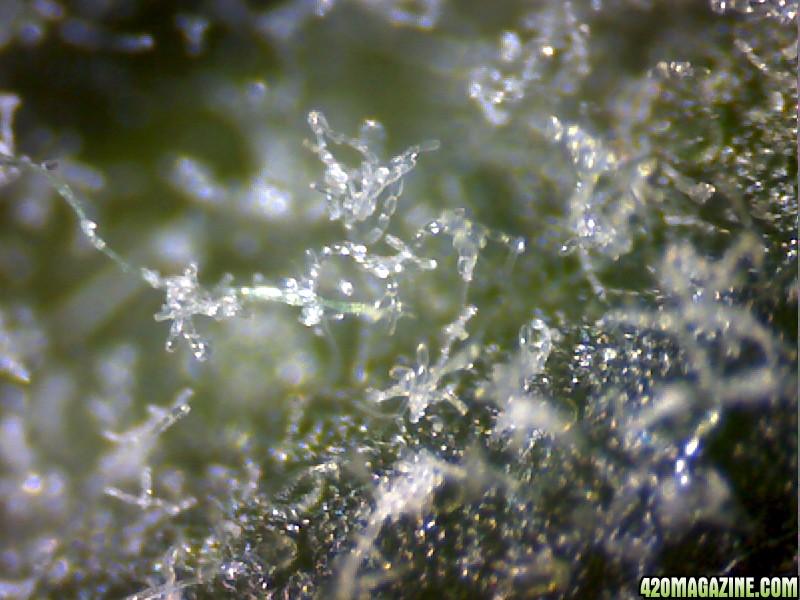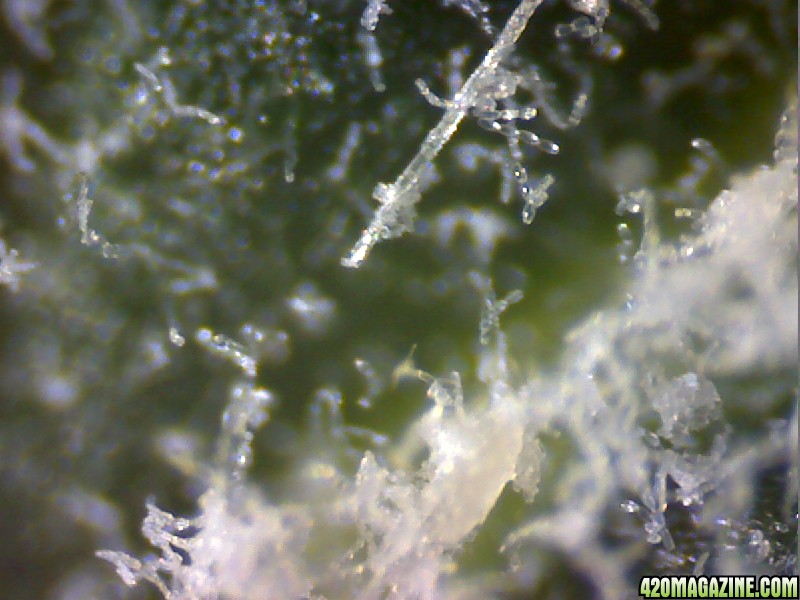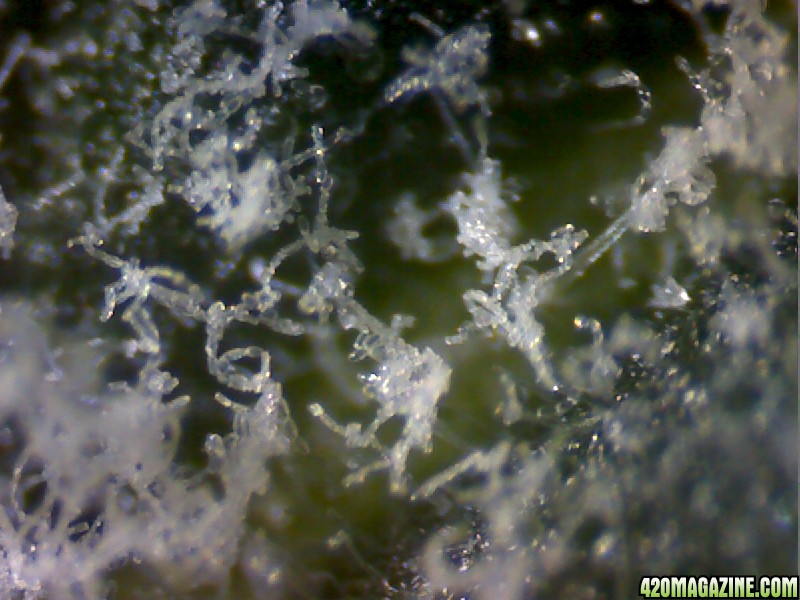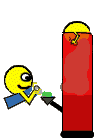- Thread starter
- #81
Ahh golden that sux about the PM..im glad to see youve got it handled!! Last spring my roses out front got it real bad... It was an issue fosho....that would be dope if you can post th mold pics soon..looking forward to them...peace
This kind of problem at the end of the flowering cycle is a pain in the ass, no question!
I know that Rose bushes are especially susceptable to this particular fungus. I keep my humidity levels around 45% so I am surprised that I got this in there. Must have come from one of the recent additions from outside. I've got several smaller plants in there now too.
Anyway...
Here is an infected GDP leaf under the microscope.
Powdery Mildew Fungus 80x



Hopefully I caught it in time. Would hate to have to toss all the buds from this latest flowering cycle, but I know that it isn't healthy to smoke anything that has this stuff on it!





 Somewhat drastic, but I have more GDPs where these came from!
Somewhat drastic, but I have more GDPs where these came from! 







 this photo!!! Purple is my favorite color too!
this photo!!! Purple is my favorite color too!


